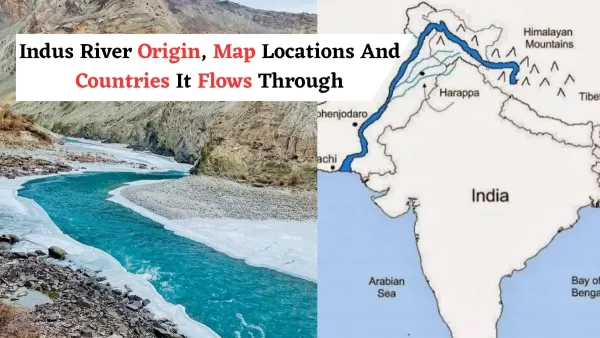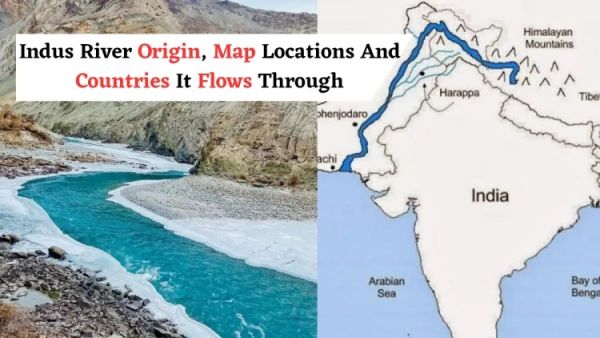
Origin and Map Location of the Indus River The Indus River is one of the longest and most important rivers in Asia. Given that it passes through several landscapes, civilizations, and countries, it has particular geographical, historical, and cultural value. India has made the historic decision to stop the Indus Waters Treaty with Pakistan in the aftermath of the terrible terrorist assault that murdered 26 tourists in Pahalgam, Jammu and Kashmir, on April 23, 2025.

The World Bank mediated the creation of this pact in 1960. Even during times of turmoil, it has long served as a symbol of the two countries’ collaboration. The decision to suspend Pakistan reflects India’s demand that it cease to sponsor cross-border terrorism. Along with the closing of the Attari-Wagah border and the expulsion of Pakistani diplomats, the Cabinet Committee on Security, headed by Prime Minister Narendra Modi, announced this action.
In western Tibet (China), between Lake Mansarovar and Mount Kailash, the Indus River rises on the icy Tibetan Plateau. This area is revered in Buddhism, Jainism, and Hinduism. The river begins its voyage at an elevation of around 18,000 feet and runs northwest. Along its 3,000-kilometer journey, the Indus feeds people, land, and history.
Map Where is the Indus River located, and whose nations does it traverse?
Three main Asian areas are traversed by the Indus River: Tibet (China), India (including the Ladakh region), and Pakistan. The river travels through Ladakh in the Jammu and Kashmir Union Territory before entering India from Tibet. It flows farther northwest and then reaches Pakistan-administered Gilgit-Baltistan. After then, it travels all the way south through Pakistan until emptying into the Arabian Sea at Karachi in the Sindh region.
The Indus River only touches the three countries mentioned above: India via the Union Territory of Ladakh, Pakistan, and China (Tibet), where the river begins. It supplies a significant amount of Pakistan and is the most important source of water for this.
Principal Indus River Tributaries
A vast river system is formed when many rivers merge with the Indus. Jhelum, Chenab, Ravi, Beas, and Sutlej are some of the principal tributaries. The Indus River System is made up of several rivers, which mostly originate in India and join the Indus in Pakistan.
Agriculture: The foundation of Pakistani agriculture is the river. Millions of acres of agriculture are irrigated by it, particularly in the Punjab and Sindh areas.
Water Supply: In Pakistan, it is the primary supply of industrial and drinking water.
Hydroelectric Power: The Indus and its tributaries have seen the construction of several dams and hydroelectric plants.
Historical Significance: Around 2500 BCE, the Indus Valley Civilization—one of the earliest urban civilizations in the world—grew up along its banks.